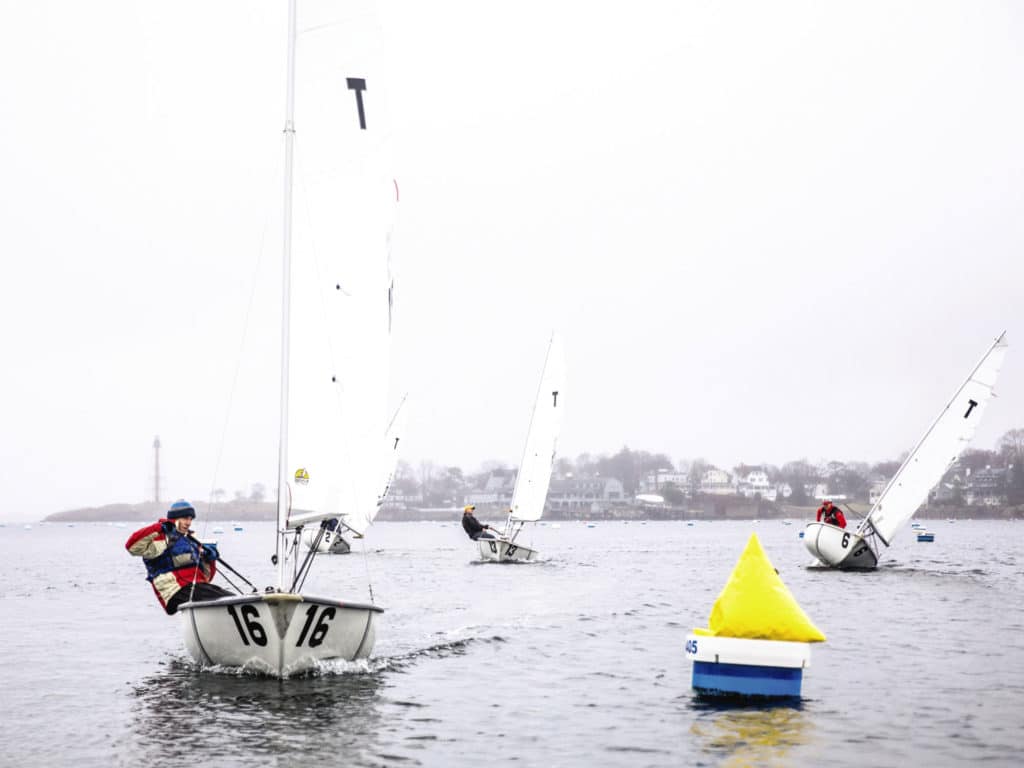
In the fall of 2020, two-time Rolex Yachtsman of the Year Jud Smith looked over the horizon and didn’t like what he saw. Almost all sailing activities had been canceled for the previous summer due to COVID-19. The upcoming frostbiting season in Sonars looked iffy because it was hard to get crew, and the boats were not suited to close-quarters racing in Marblehead Harbor in the winter.
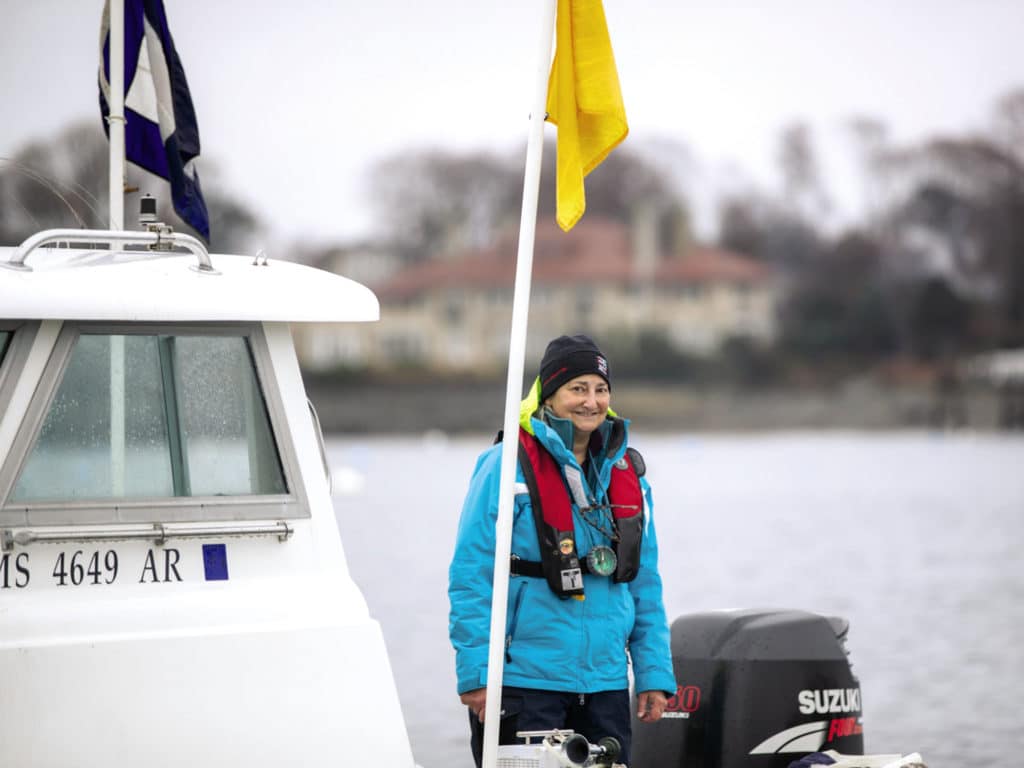
Smith started looking for a singlehanded option that would be warmer and less exposed to the elements than a Laser. That’s when he saw an ad that Franny Charles, the MIT sailing master, had placed. Seventeen identical Tech dinghies were for sale at $1,250 each. Designed by professor George Owen for the opening of the MIT Sailing Pavilion back in 1935, the boats were the sixth generation of the design and self-rescuing.
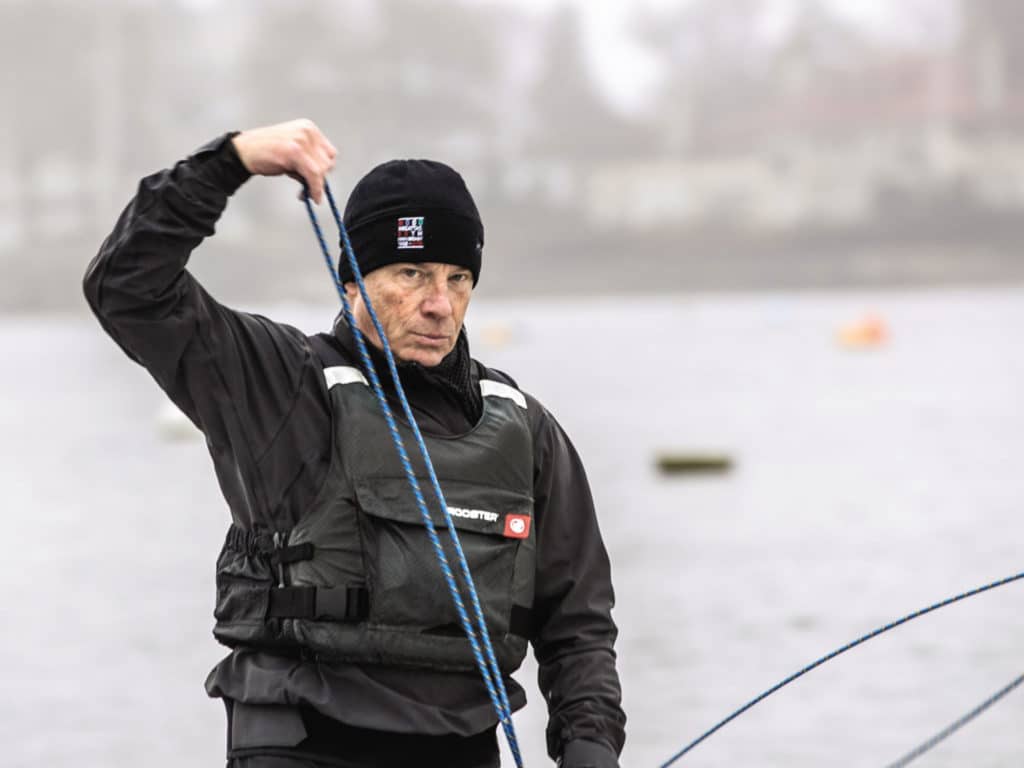
“The boats were 10 years old. These were built by Whitecap Composites with a carbon-fiber inside skin with a core, then a fiberglass outside skin,” Charles says. “They were 160 pounds lighter than the prior boat. We teach between 2,300 and 2,500 students every year how to sail at MIT. They run into each other, run into the granite wall, sail under the bridges, and occasionally beach the boats on the Esplanade. We certainly know how to specify a robust construction.”
Smith believed the boats had some good life left in them, so he reached out to his colleague Tomás Hornos, also a sailmaker at Doyle, to gauge his interest. Hornos asked Charles if he could give the Marblehead crowd a week to see if he could find people who would commit to the fleet. Charles said yes.
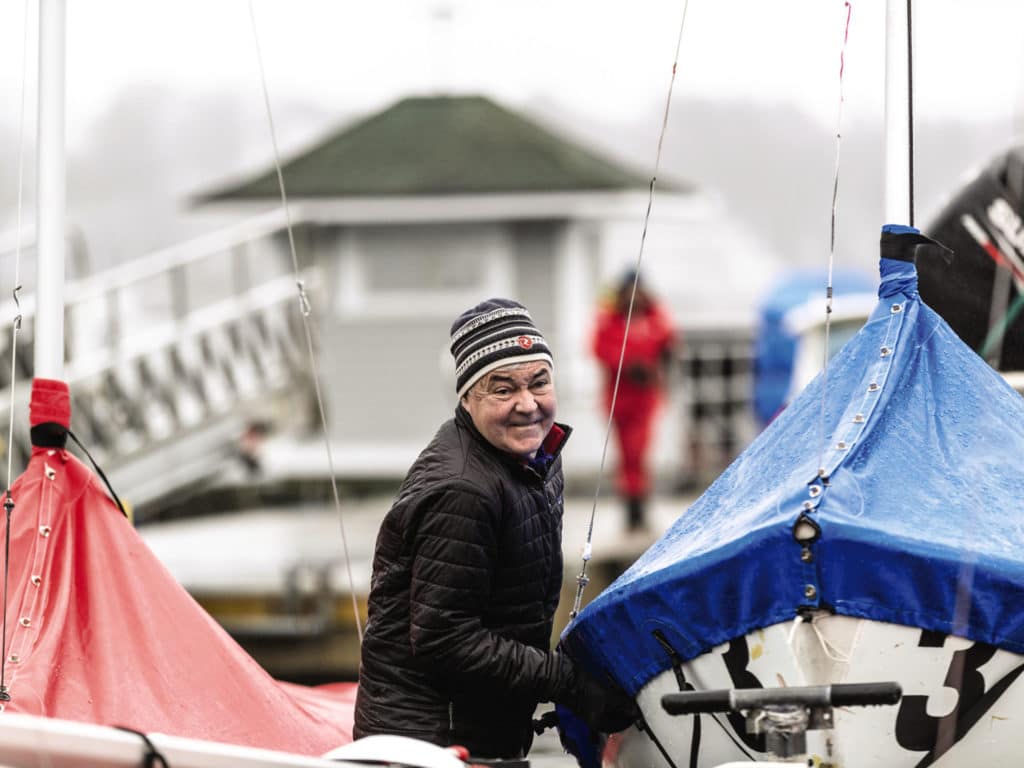
So, Hornos started cold-calling people and leaning into his recruitment scheme. One of the folks he reached was Tom Dailey, the pied piper of Marblehead’s Laser fleet. Dailey chuckled. “Tomás said this is a one-call deal,” Dailey says. “I’m looking for people to buy Tech dinghies for $1,250. If you want one, I need you to say so right now.”
Dailey’s one-word answer to the one-call deal was, “Yes.”
So, it went. Enough yeses came in via phone and text to fill the order for 17 boats. After those 17 boats were purchased, the group discovered a parks and recreation program in western Massachusetts that owned four Generation 6 Techs. A deal was made to trade the four Gen 6 Techs for three new boats more suitable to the program. That brought the fleet to 21 boats.
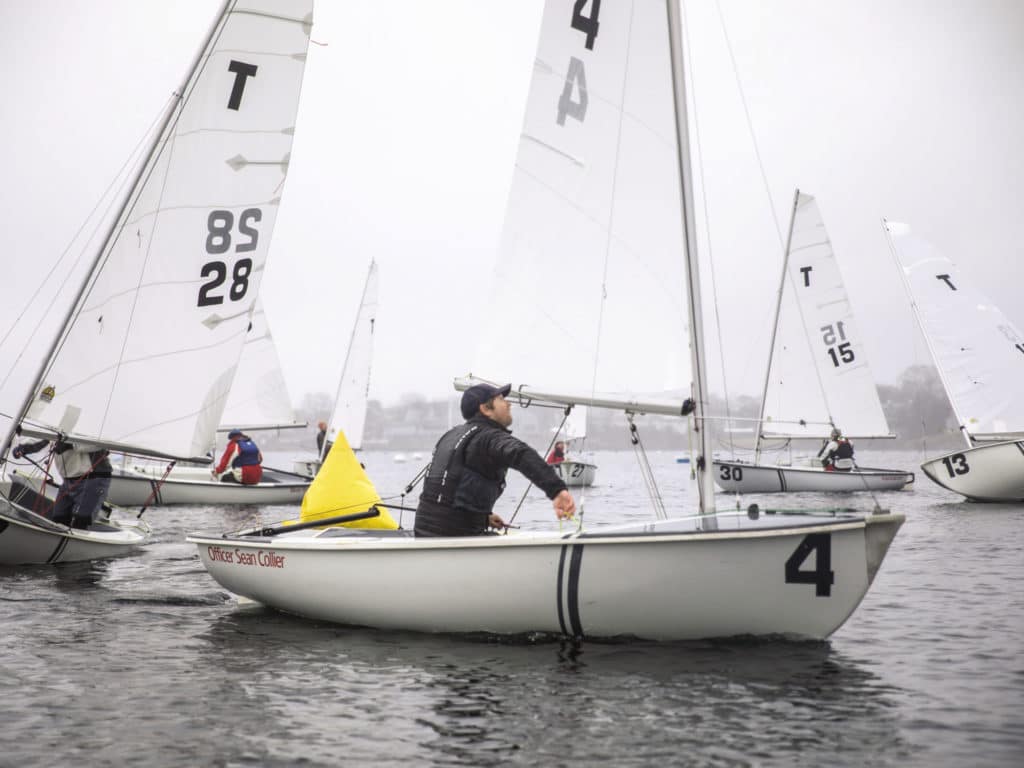
Marblehead’s frostbiting DNA goes back for generations. In fact, Smith’s dad was part of the Marblehead frostbite scene in Fireflies at Boston Yacht Club back in 1957, the year he was born. The fleet transitioned to Interclub dinghies in 1963, then moved across the harbor to Eastern Yacht Club. The IC dinghy fleet relocated from Eastern in Marblehead to Cottage Park in Boston decades ago. So, the Laser fleet, which takes a break during the coldest months of the winter, carried on the frostbite tradition.
But memories don’t build a fleet. For this to work, the fleet would need a home. Boston YC in Marblehead is poor in terms of tennis courts, pools, hot tubs, and other amenities available at other nearby clubs, but it is rich as far as a parking lot, dual hoists, and a protected location to launch Tech dinghies in the winter. Rear commodore Jay Watt asked the club’s board if it would sign on to host the fleet. The response was positive.
“Boston Yacht Club is very, very inclusive,” Watt says. “The club opened their doors to winter members for a nominal fee of $100, and in the space of a few weeks figured out how to store boats, launch boats, run races, all the while abiding by COVID-safe protocols.”
When the Tech dinghies arrived, the hulls were in good shape, but the sails had seen better days. The Doyle brain trust kicked into gear: Robby Doyle, Smith and Hornos set out to come up with a better sail. Watt notes: “Redesigning a sail for a boat that has a theoretical sales limit of 21 boats is a project of passion. The new square top sail has more power, which results in better competition.”
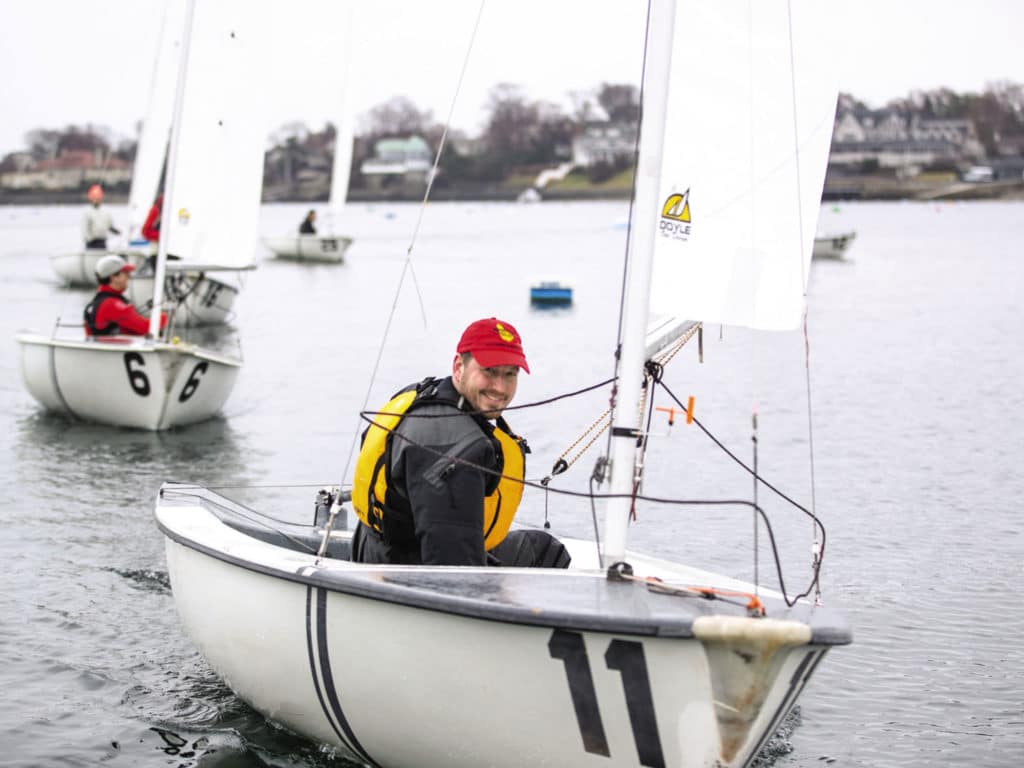
The team at Doyle also made covers for the boats, available for $350 each. Smith, the former J/70 world champion, notes: “We did it at cost. You are not going to make a career out of making Tech dinghy sails or covers.”
In the same two-week period, Watt drafted the bylaws of the Marblehead Tech dinghy fleet, which span five pages. Article IX summarizes the vibe of the fleet. “It is the intent of the MTDA to maintain a truly one-design fleet and discourage the typical ‘arms races’ that can occur. No modifications are allowed unless explicitly allowed in the fleet rules.”
Tomás Hornos started cold-calling people and leaning into his recruitment scheme. One of the folks he reached was Tom Dailey, the pied piper of Marblehead’s Laser fleet.
As Watt looked for support at BYC, he turned to the race committee chair, Karen Tenenbaum, who was thrilled to see the Tech dinghies. “We had a flagging frostbite program using club-owned Sonars,” she says. “We were getting somewhere between three and five boats a day. Generally, people were losing interest.”
The Tech dinghy fleet has reignited frostbiting at the club, Tenenbaum says. “The camaraderie and sportsmanship of the fleet are amazing. I think it’s because these guys are so good, they don’t have to resort to bush league. They just let their sailing do the talking. That was something in the Sonar fleet that was lacking, to be honest.”
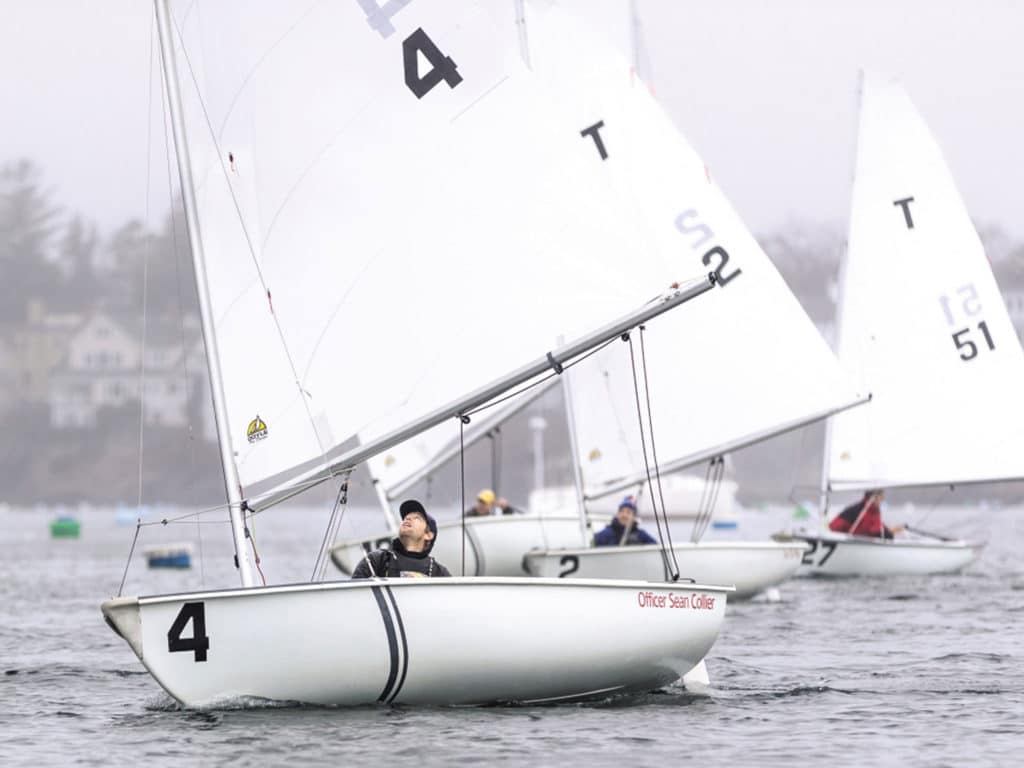
Tenenbaum, who runs good, fair, square races, believes no club could sustain a competitive sailing program with just members. She is eager to open doors to nonmembers, and the frostbiting season is a time of year when there is not a lot of competition for parking spaces. “Part of the reason for the decline of racing these days was the exclusivity,” she says. “You really need to turn to inclusivity.”
On a Sunday in January 2022, Tenenbaum is running races. Three crash boats assist her with mark placement, and 17 Tech dinghies vie for glory. Hornos competes in his boat named Officer Sean Collier. Tufts University sailing coach Ken Legler skippers River Rat. Young Grafton Hamilton hones his skills in Quigley. The names of the boats were chosen by the donors to the MIT Sailing Pavilion. One of the only stipulations Charles made when he sold the boats was that the fleet would keep the names to honor the intent of the donors.
“It’s wonderful to see a second life for these boats, even after they have taught thousands of MIT students how to sail in their first life,” Charles says. “Many donors have written and commented that they are pleased the boats are still going strong in Marblehead.”
One of the unwritten rules of the fleet is that if you can’t sail your boat on Sunday, find someone who can. The matchmaking of skippers to boats is arranged by Hornos, and WhatsApp enables group texts so that communication can flow in all directions. On Thursday, a fleet roll call is sent out, which can include fleet news, calls for RC assistance, and other vital communications.
The value is in the camaraderie, the gathering after sailing and the storytelling, taking pride in that fact that we went sailing today. The sailing itself is only two hours, but it’s a beacon of light at the end of
the week.
From the time when the Marblehead Tech dinghy fleet was just a twinkle in Smith’s eye, he has believed it is important for individuals to own the boats rather than a club. “I’ve always had a problem with institutional fleets,” he says. “Sailors who don’t have skin in the game aren’t going to be as careful as if they own the boat. The three main clubs in Marblehead have struggled to keep the Sonar fleet (which is club-owned) up to snuff. It’s not unusual to have collisions and the mast come down, or the boats collide and it’s not inexpensive to repair them.”
With all of the accolades he has earned, Smith is quick to credit the circumstances and others for the success of the fleet. It was a combination of COVID-19 and people having a lot of free time, and the fact that the boats were available. In his mind, it wasn’t all that different from how the local J/70 fleet got started.
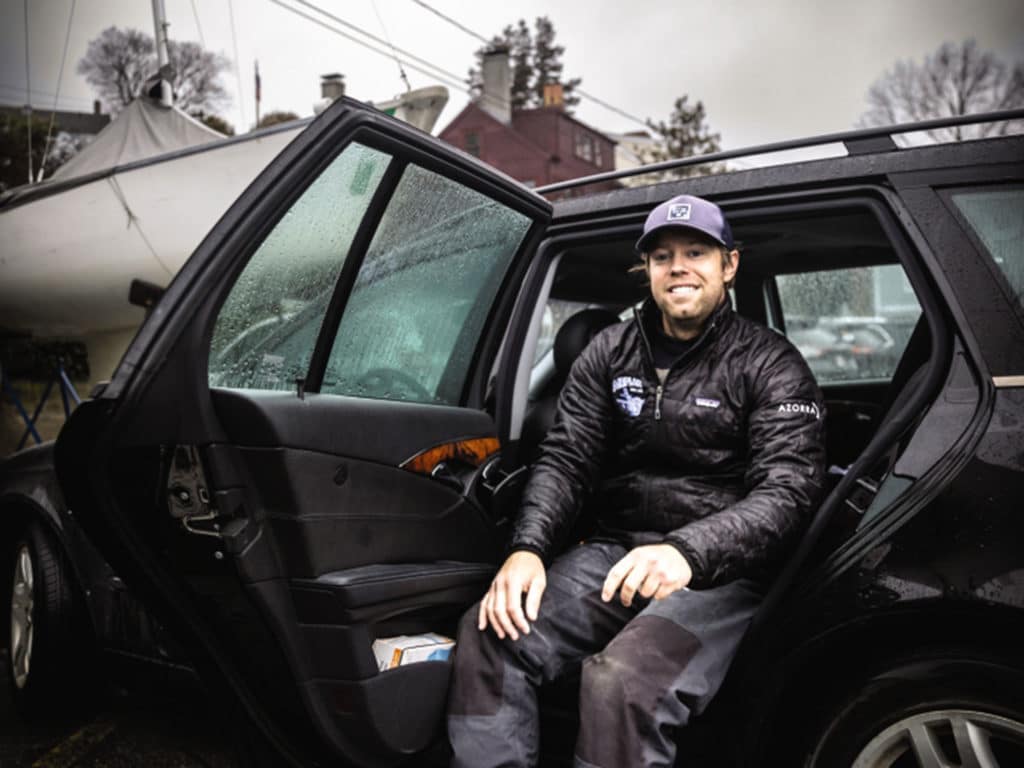
“The economic downturn was the reason the J/70 took off,” he says. “It takes more than a great boat to get traction. There has to be an underlying need or want. If we were trying to build the Marblehead Tech dinghy fleet without COVID-19, it would have been more difficult. The shutdown made it so everyone was sitting at home looking for something to do. We were competing with just sitting there watching TV. To some degree, the stars aligned. Jay and Tomás do all the heavy lifting. All I can do is provide some historical perspective.”
Dailey, who sees himself as “fodder for the middle of the fleet,” views the success of the Marblehead Tech dinghy fleet as a cause for hope for sailing. “The summertime stuff with people taking a week off for Marblehead Race Week, it’s going away,” he says. “I love that stuff, but it’s in secular decline. When I look ahead, I think something like the Marblehead Tech dinghy fleet can work. It’s a smaller time constraint, you’re sailing right off the dock, it’s a time of year when nothing else is going on, the social is right there under the crane.”
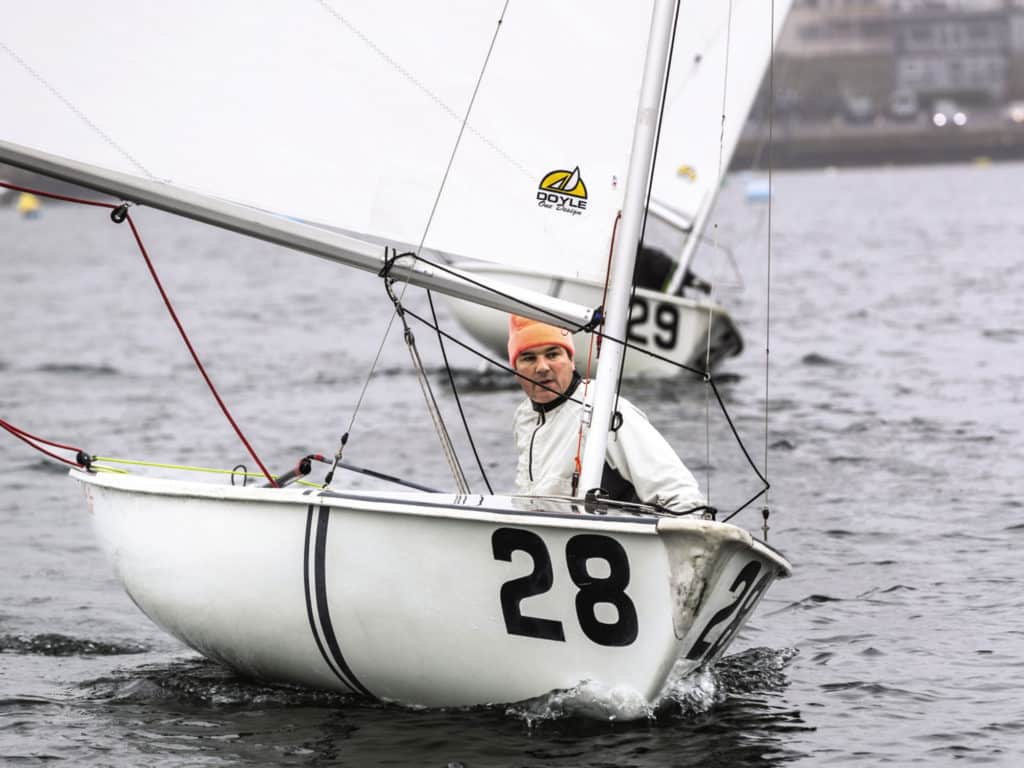
Hornos believes frostbiting offers great bang for the buck. “The value is high. It’s not just the sailing that people get value out of,” he says. “The group is very friendly, very inclusive. There is not a lot of ego in the boats. The value is in the camaraderie, the gathering after sailing and the storytelling, taking pride in that fact that we went sailing today. The sailing itself is only two hours, but it’s a beacon of light at the end of the week. It provides some energy for the weekend. There’s a lot to be said for having a routine like that.”
As of this writing, the purchase price of Generation 6 Tech dinghies in the Marblehead fleet has inched above the initial buy in price. You don’t have to be smart enough to get into MIT to figure out why.









